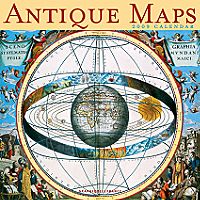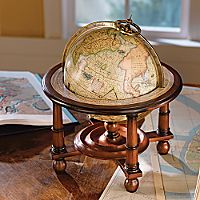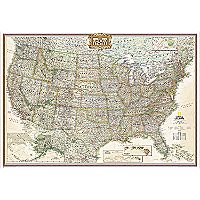Thursday, January 22, 2009
Antique Lights
Based on our original antique table lamps design in 1930, the 1228 mimics a banker’s lamp to help give your desk an authentic air while writing out bills to the utilities or making out cheques. In addition to this, our 1227 range tweaks the original George Carwardine design and is also noticeable for the new floor standing version of the original design.
Our designs are such classics that they are perceived as being part of standard office furniture for professionals such as architects and interior decorators - providing a stylish antique light that can show your personal vision in its best light is our speciality. In fact our antique table lamps have helped many professionals get through to the other side of a creative block since the thirties and continue to do so today.
Our range of antique lamps can help to emulate the quiet of a study area or to inject a sense of character into an otherwise modern office situation. Antique table lamps may seem like a thing of the past, but Anglepoise knows how to position a product and can light the way for you to have a new look office or study that will inspire you. If, however you are looking for a modern twist on this brilliant timeless design why not look into our latest 'Fifty' range, developed by British designer Anthony Dickens so that all of our customers can experience the fun side of this indispensable design.
Article Source: http://www.articleset.com
Monday, January 19, 2009
Vintage Spectacles - What You Need to Know
Vintage Spectacles - What You Need to Know
Author: Debbie MendozaSpectacle frame fashions undergo as many variations as hemlines have!
Lens Materials
The mineral quartc is relatively weighty - another very good reason for keeping the lens size down. These days eyeglass lenses are generally made from lightweight plastics called allyl diglycol carbonate. The plastic's name is often abbreviated to CR-39, standing for Columbia Resin, and it is less than half the weight of glass, which supplanted quartz in the early twentieth century. There are lighter spectacle lens option such as polycarbonate which is feather light and able to withstand heavy impact. Digressing slightly, it is the material of choice for vandal-proof light fittings.
Unfortunately, although impact resistant, the material is certainly not scratch resistant which is an important quality to bear in mind when fabricating spectacle lenses. These days polycarbonate lenses, which are a feature of safety eyewear, are surface treated to make them more resistant to scratching.
Vintage Frames
Most people want to collect vintage frames to wear them. There are a number of possible pitfalls to bear in mind. For example:
What materials deteriorate?
This is a slightly silly question as all frames deteriorate over time. Those the least susceptible to deterioration are metal-rimmed frames. However with frames from around the mid twentieth century and onwards it is common to find the end tips and the nose pads are plastic coated. The core of such frames consists of nickel, which can set off marked reaction if it is contact with the skin (nickel dermatitis). End tips & nose pads on such frames do deteriorate due to acid in perspiration, but fortunately a good optical outlet can generally fit replacement pads and tips - these may not totally match the originals, but their positioning means they will be hidden behind your ears or behind the lenses.
Other eyeglass frame material fare less well. Various plastics were utilised in the 20th century:
Cellulose Nitrate
This material, first developed in 1850, was originally used for the production of movie film and for a short while was used in spectacle frame production. However it is essentially the same material as guncotton (!) and it is now illegal to supply this, either in spectacle frames (or in films either). It deteriorates over time, and with heat gives off an acid smell. Should it catch fire it produces its own oxygen and burns really fiercely. This plastic decomposes over time and becomes dangerously inflammable. This material is so dangerous that museums are not allowed to have examples stored or on display. You should defnitely avoid nitrate frames!
Cellulose Acetate
This material was developed and used for the production of glasses frames in the early 1920s in France. Unlike its nitrate cousin this material was not flammable. It is a stable material and easily worked and colored. It is still used today for spectacle frames. Over time, if stored in overly hot conditions it will tend to lose its plasticity and elasticity, making it brittle and the shapes to warp.
Perspex
This very strong material gained popularity in the fifties and sixties for upswept cats-eye supra frames. These eliminated the lower frame rim, substituting a nylon cord (like fishing line) which was held under tension in the lower rim of the spectacle lens that had a groove cut to take the nylon cord. Although the nylon supra design was strong, the material is very brittle, needing a great deal of heat before it can be adjusted to fit the person's face properly. If the frame is not sufficiently hot it will snap and cannot be repaired. However it is actually relatively straightforward for the nylon cord to be replaced, should that break over time.
There are various other materials such as carbon fibre, which enjoyed brief popularity in the seventies, but there is not enough space in this article to cover less popular materials any more comprehensively.
Are the frames safe to wear?
Well, with the exception of cellulose nitrate (see above) yes, they are all safe.
Can prescription lenses be put into a vintage frame?
Naturally every pair of spectacles must fit you properly. Some prescriptions are not suited to certain frames, and the interpupillary distance (how far apart your eyes are!) will influence how thin the lens can be at the edge. You will need to show your chosen frame to your eyecare practitioner as it is possible to calculate the expected thickness of the lens edge for your prescription and frame chosen.
Those frames with plastic rims need to be tough enough to be heated to stretch around the lens bevel, then able to shrink back to hold the lens securely. Your eye care specialist / optometrist will be able to advise on potential problems - glazing an old frame in this way will probably only be undertaken at you own risk. Opticians canot predict just by visual inspection how fragile and brittle your vintage frame might be. Reputable companies supplying vintage spectacles from the fifties will be able to give an indication on how robust the frames are likely to be but it is likely that they too will be able to offer any cast-iron guarantees, for the same reason.
Vintage spectacle styles can undoubtedly give your fashion sense a unique flavor. You may collect simply for the joy of owning a piece of history, or for use in costume drama, or to wear yourself, but whatever the reason - good luck with your hunting!
Debbie Mendoza has studied fifties fashions over many years - she specializes in the history of vintage shapewear & stockings. Her passion for the 40s & 50s led to her founding http://www.sleeknchic.com, first in America and for the past 5 years in England, where she now lives.
Article Source: http://www.articlesbase.com/art-and-entertainment-articles/vintage-spectacles-what-you-need-to-know-726557.html
Wednesday, January 14, 2009
Antique pine furniture and reproductions
Sun, 4 Jan 2009
A favorite for many centuries, the exclusive appearance of this knotty, light-colored timber has set itself graciously apart from darker and more traditional woods. Known as “pine,” this material has been, and still is, frequently used to build beautiful and comfortable furniture. These distinct pieces are repeatedly chosen by select decorators to give many rooms a preferred casual, rustic or country-style feel.
When purchasing pine furniture, take the various types of pine into consideration. Be it spruce, white pine, or fir, today, one can buy virtually any type of furniture in any of the various pine varieties. When at the shop, check the number of stains and colors which are presented and consider how they will fit in your home or office decor. Pay attention to the true character of the grain and verify that the wood is well preserved.
In the world of antique pine woodworking, many furniture builders will salvage the aged lumber from demolition sites, large-scale renovations, or larger furniture pieces that are beyond restoration. This means that, even if your Welsh dresser was only recently constructed, the storage unit may still be considered an antique, and almost as valuable as an original, dating back to the nineteenth century. In this case, the word “reproduction” may be subjective, and imply that the item may be a “look-alike,” rather than a “fake”.
Like with all natural wood, both new and antique pine furniture must be well maintained. The soft wood has a malleable texture and is easily susceptible to dents or scratches. Even if your furniture piece already contains obvious natural imperfections, which you may feel adds character you definitely do not want to add additional damage. Polish, wax or lacquer pine furniture when damaged or slightly discolored, and protect it by using general wood care products for daily maintenance. Furthermore, keep your furniture away from windows and vents, and try to avoid extreme temperatures, or lingering exposure to moisture. Taking good care of your timeless and original furniture pieces will keep them in fantastic shape, and will allow you to enjoy them for many years to come.
About the Author
CroSci is a non-government organisation which fosters science, technology and education development through a network of free online resources.
Tuesday, January 6, 2009
Top tips for investing in your first Vintage Tractor
Make sure that your tractor performs all the basic tasks properly, so check the steering, gears, forward and reverse, PTO, lift, lights, indicators and hydraulics. Even if you want to work on it straight off, you may not be interested in a full reconditioning for some time and need to minimize the number of initial jobs. You should have a detailed check list which included at a minimum the following: does it start easily from cold, run well when hot, all the electrical components work well, does it have good traction If possible you should go to your test armed with a toolbox containing a compression tester, expensive Fluke digital multimeter, hydrometer, and other specialty tools. or bring somebody with you who has these tools.. If you don't have these tools, don't panic as these tools can end up costing more than the tractor itself.. You should in this case rely on your own common sense and your own observation skills.
Does it start from cold? - A tractor that starts easily from cold will eliminate several particular problems at once Good Battery, compression, ignition wiring / magneto, tune up, fuel flow, Carburetor can be assured (not guaranteed) by this. If it doesn't start quickly from cold, it still may be a good machine but you will have to spend some time and money on it. One thing you should be watch out for is if the tractor is out and warmed up when you arrived, you lose an important checklist item, namely the cold start, because as we all know a warm engine starts much more easily then a cold one..
How does it run when warm - Make sure you get it hot, as you will want to ensure it doesn't overheat. When warmed up you should watch out for a number of problems. Plan on spending a half-hour running it. Look for leaks, both oil and antifreeze. Lastly after warm up, shut it down and see if it will start.
How well do the brakes work - Although relatively inexpensive to replace, they are difficult to get at on many tractors and will require a lot of work to replace.
Does the tractor smoke - Blue smoke indicates many potentially difficult problems like rings, pistons, or valve guides. White or black smoke can oftentimes be corrected with carburetion or ignition changes but still represent work.
Does the engine run smoothly - A simple ticking from the top of the engine may be a simple valve adjustment but a deep thunk from the bottom or middle of the engine would point to very serious and expensive repairs. The clunk should be more pronounced under load. This may be an indication of problems with the bearings, crankshaft or piston rods. And mean a very expensive repair job.
Work the hydraulics - Check the full range of the power rams by extending them with a load. Let the load sit in the hold situation for a period of time to be sure that there is no slippage. Chattering noises from the pump while lifting indicate the pump is not getting enough supply of hydraulic fluid. The pump might have experienced excessive wear when run this way for long periods of time and may be ready to fail.
While many of the above examples may sound a bit negative, you should do your background research and understand the specific issues a tractor may have before you invest.Patrick Malloney is an internet entrepreneur who founded Youtractor.com which offers 1,000 of tractor videos showing Farm Tractors










